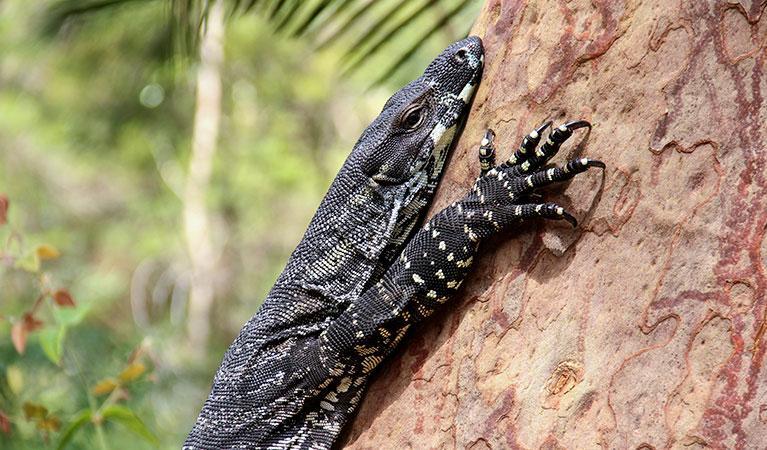
Scientists Uncover Hidden Bone Structures in Monitor Lizards’ Skin
.monitor-lizard-skin-1
When it comes to fascinating creatures, monitor lizards, also known as goannas, are certainly among the most intriguing. Native to Australia, these reptiles have been a subject of interest for scientists for years, and a new study has shed light on a previously unknown feature of their skin. According to researchers, monitor lizards have a hidden layer of bony skin structures, known as osteoderms, beneath their scales.
Osteoderms are not a new discovery, but a recent study has revealed that they are more widespread than previously thought. The study, published in the journal PLOS ONE, suggests that osteoderms occur in nearly half of all lizard species worldwide, an 85% increase on earlier estimates.
But what exactly are osteoderms, and what role do they play in the lives of monitor lizards?
What are Osteoderms?
Osteoderms are bony plates that are embedded in the skin of certain animals, including reptiles, amphibians, and fish. They are often referred to as “chainmail” due to their armor-like appearance, and serve as a protective barrier against predators and environmental stressors.
In the case of monitor lizards, the osteoderms are located beneath the scales on their backs, and are made up of bone tissue. While they may provide protection against predators, scientists believe that they may also play a role in heat regulation and mobility.
Heat Regulation
One theory is that the osteoderms help monitor lizards regulate their body temperature. By allowing or restricting the flow of heat through the skin, the bony plates may help the lizards maintain a stable body temperature, which is essential for their survival.
In hot climates, the osteoderms may act as a barrier, preventing too much heat from entering the body. In cooler climates, they may allow heat to enter, helping the lizards to warm up.
Mobility
Another theory is that the osteoderms provide support and stability for the lizards’ movements. By anchoring the scales to the underlying skin, the osteoderms may help the lizards to move more efficiently, particularly when they are running or climbing.
In addition, the osteoderms may also help to distribute the forces generated by the lizards’ movements, reducing the risk of injury or strain.
Widespread Distribution
The study, which analyzed over 1,000 species of lizards, found that osteoderms are more common than previously thought. In fact, nearly half of all lizard species worldwide possess osteoderms, including many species that were previously thought to be osteoderm-free.
The widespread distribution of osteoderms is likely due to their many advantages, including protection, heat regulation, and mobility. As such, it is no surprise that they have evolved in many different species of lizards.
Conclusion
The discovery of hidden bone structures in monitor lizards’ skin is a fascinating example of the many wonders that lie beneath the surface of the natural world. Osteoderms are an important feature of these reptiles, providing protection, heat regulation, and mobility.
As scientists continue to study these amazing creatures, we may uncover even more secrets about their biology and behavior. In the meantime, the discovery of osteoderms in monitor lizards serves as a reminder of the many mysteries that still remain to be solved.






